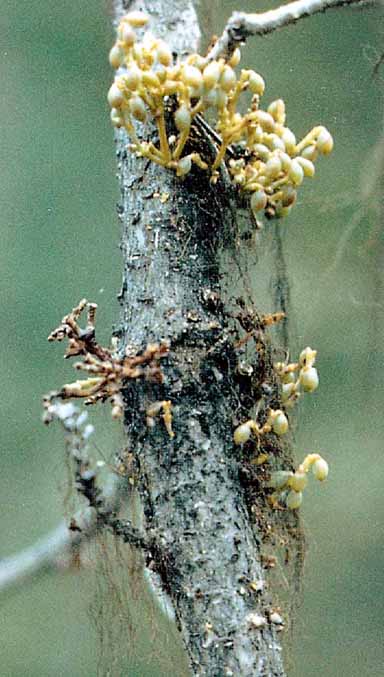Dwarf mistletoes
Dwarf mistletoes are parasitic seed plants belonging to the genus Arceuthobium and only survive on live hosts. Dwarf mistletoes affect several coniferous tree species in forested ecosystems across North America. They are integral components of these forested ecosystems and can have both beneficial and detrimental impacts on the health,function and productivity of forests.
Description
Dwarf mistletoes cause brooms, reductions in growth, impact wood quality, and in some cases mortality. The impacts of dwarf mistletoes are directly related to the distribution and number of dwarf mistletoe infections on a tree (severity).
In B.C., there are four species of dwarf mistletoe each associated with a different primary host. The four primary hosts are lodgepole pine, hemlock, western larch, and Douglas-fir. There is also a subspecies of hemlock dwarf mistletoe that affects shore pine.
Hemlock dwarf mistletoe is found only on the coast and Douglas-fir dwarf mistletoe has a fairly narrow geographic distribution in the southern most portion of the host range.
Management
The main method of dealing with dwarf mistletoe is through sanitation spacing to remove any overhead seed sources and live trees over a specified height. Seed can spread up to 15m from an overhead seed source. In contrast, spread in single story, closed canopy stands is generally less than 1m per year. This is due to seed interception and inadequate light. Adequate light is required for dwarf mistletoe shoot and seed production.
Learn more about the management of dwarf mistletoe (PDF, 4.6MB)

Lodgepole pine dwarf mistletoe, Arceuthobium americanum
Contact information
Contact us if you have further questions about managed-stand pests and how they are controlled in B.C.
